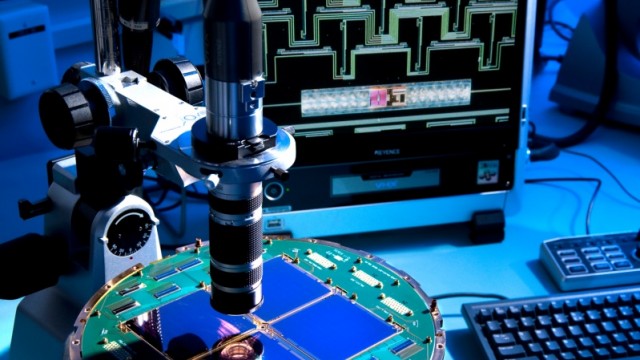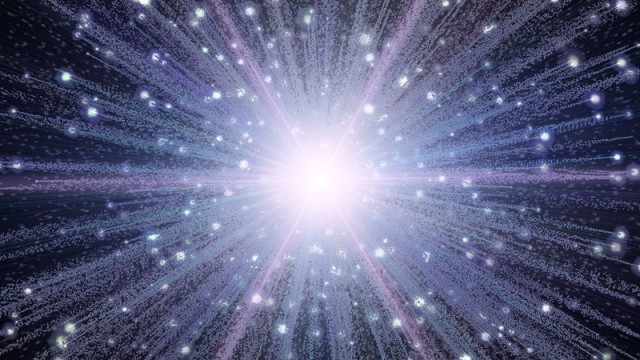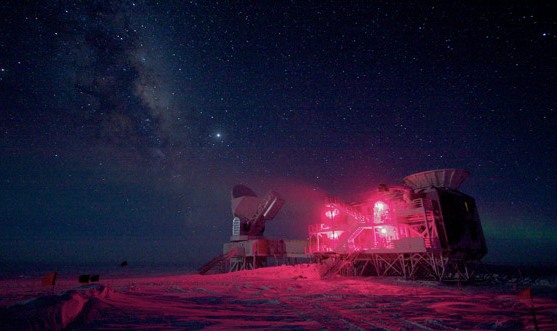In a week during which the mystery of the birth of space, time and billions of galaxies was solved, the mystery of the disappearance of an airliner has deepened. The global media is more than willing milk a tragedy to satisfy the superficial hunger for sensationalistic mystery. But what provides a sense of true mystery?
 The latest scientific breakthrough—finding evidence of gravity waves the instant after our universe was born—is a big deal. It confirms the theory of the almost instantaneous inflation of space, and has tremendous implications not only for the scientific mind but also for the religious mind.
The latest scientific breakthrough—finding evidence of gravity waves the instant after our universe was born—is a big deal. It confirms the theory of the almost instantaneous inflation of space, and has tremendous implications not only for the scientific mind but also for the religious mind.
In the first moment of its birth, the universe went from something the size of an atom to billions of light years across in the blink of an eye, much faster than the speed of light. Scientists surprised themselves in detecting the primordial gravity waves of that event, which Einstein predicted but believed too faint to be detectable. The patterned microwaves turned out to be much less subtle than even the most optimistic of present-day researchers had expected. Nature always surprises us.
“This has been like looking for a needle in a haystack,” said Clem Pryke, co-leader of the BICEP team, “but instead we found a crowbar.” BICEP is the acronym for “Background Imaging of Cosmic Extragalactic Polarization,” a muscularly named project for detecting the weakest phenomena in the universe—the very first signs of the universe’s expansion an infinitesimal moment after the Big Bang.
It’s hard to conceive of a time when space did not exist. We can conceive of an empty universe, before there was any energy or matter. But we can’t conceive of a universe devoid of space, since we conceive of space as devoid of anything.
In point of scientific fact however, space did not exist before the Big Bang anymore than energy or matter did. That is, there wasn’t empty space, and the subatomic opening at the cosmos’ birth filled it; rather, the Big Bang created space itself.
Fast-forward a few trillion years, to the end of the universe, when all the stars have burned out (including the red dwarfs, which last billions of years longer than our sun). The present consensus is that because the universe continues to expand at an increasing rate, due to hypothesized ‘dark energy’ (dark because we can’t see or measure it as yet), the cosmos will end in a ‘Big Rip,’ which tears apart every atom in the cosmos.
But I think that will turn out to be wrong, and black holes will play a much bigger role in the death of the universe.  There’s a supermassive black hole at the center of every galaxy, and probably billions in each galaxy. The huge amounts of mass and energy they absorb are lost to our measurements, but still part of the cosmos.
There’s a supermassive black hole at the center of every galaxy, and probably billions in each galaxy. The huge amounts of mass and energy they absorb are lost to our measurements, but still part of the cosmos.
Be that as it may, in one sense we’ve reached the limit of scientific knowledge, and of knowledge itself. That’s because there is no way we can every measure anything before the moment of cosmic inflation, when the laws of physics and time itself came into existence. We simply can’t go back any further.
Science is based on measurement, and measurement is based on time. No time, no measurement; no measurement, no science.
Therefore we cannot hypothesize, test and find evidence for what existed before the Big Bang, because it is beyond the ability of science to do so. Science, like the laws and physics, and space-time itself, ends where it all began. So without falling back on the juvenile notion of a separate Creator, we’re faced not only with a great mystery, but with an eternal mystery.
To be sure, there will always bee mysteries for science to solve. And there are still big questions remaining—for example, the nature and location of dark energy and dark matter, as well as whether life exists on other planets, including intelligent life. But one of the biggest mysteries has been solved.
Yet the human need for mystery remains. Is that a true and necessary thing, or a psychological need, which is filled for the healthy by reading mystery novels, and for the sick by a sick media speculating endlessly on a missing airliner?
Human beings have an innate requirement for mystery, awe and reverence that neither pure science nor a corrupted media can fill. It boils down to the question: Can the religious mind harmoniously co-exist with the scientific mind? It not only can, it must.
There are mysteries that science can solve, and an infinite mystery that cannot be touched. There is, in other words, a place for both the scientific mind and the religious mind. However, the scientific mind cannot contain the religious mind, but the religious mind can hold the scientific mind.
The religious mind in the sense I’m using the term has nothing to do with beliefs, traditions and rituals, but with inward growth arising from awareness of mystery and gratitude for life.
This week we’ve glimpsed the wonder of the cosmos and the inherent limits of scientific knowledge, as well as plumbed the depths of human meaninglessness. But the sacred mystery of life remains, and always will.
Martin LeFevre

